Again and again, they stretch out their spindly minute matchstick palms into the mighty Pacific, and again and again, they get their knuckles rapped.
Rapped, damaged, burned, smashed to bits.
And but what do they do? They store sending the ones fragile digits out into the sea, like a center finger defying the weather.
And that, in sum, is the historical past, the character and the nature of the piers we’ve constructed and rebuilt, have liked and misplaced, alongside the California coast for greater than a century and a part. If piers have been population, you’d must marvel what insurance coverage actuarial tables would divine about their longevity possibilities.
As summer season sends extra folks out to those cavorting gardens to get up above the sea and consume and play games and fish and don’t-you-dare-smoke, it’s a just right pace to understand a little extra about them.
For something, no longer they all are within the snip and even revealed for industry. A hearth on the finish of April ate thru Oceanside’s pier, whose first incarnation used to be in-built 1888. The pier burned for a number of days, and it is going to whisk a number of years and about $17 million to deliver it again from its unedited near-death revel in.
So what else is unused? The seven plagues of California’s piers are fireplace, ocean storms, fireplace, impaired time, civic budgets, send worms referred to as teredos, and fireplace.
And quiet the piers have soldiered on — constructed, destroyed, rebuilt — some over greater than 100 years, and advanced in the course of the 3 levels of pier month.

A lot has modified on the New york Seaside Pier since this postcard from Patt Morrison’s assortment used to be issued, appearing a bathhouse and cafe.
What the wharf?
At first, there used to be the wharf, the rudimentary, workaday pier constructed to get items from right here to there.
The second one, the usual pier, additionally discovered an early fan bottom for fishing and for municipal functions, and from time to time it’s been commandeered for army accountability.
And the model we adore and know easiest is the frolicsome, continuously gaudy ease pier, redolent of the scents of corn canine and popcorn and fishy waters. The most famous of those hereabouts is the Santa Monica Pier, recognized even to the landlocked from motion pictures and TV.
Almost certainly L.A.’s earliest wharf, Santa Monica’s Shoo-Fly Touchdown, used to be in-built 1871 in order that Henry Hancock may just ship ox-drawn wagons of asphaltum, “brea,” from his tar-rich inland rancho out to the coast, to load onboard northbound ships to pave San Francisco’s streets. The architectural historian Reyner Banham conceived that the wharf planted the seed that grew into Santa Monica, and that the tarry stench that earned the touchdown its nickname got here from the “pee-yew” formality that individuals made, fanning at their noses as they moved quickly through.
Larger and sturdier wharves changed it. In 1875, a railroad constructed a 1,700-foot wharf close by to ship silver from Inyo County mines to the San Francisco Mint, and to welcome and disembark passengers from the Bay Segment.
In 1893, within the combat over which millionaire faction would win the federal battle for the web page of the L.A. port, Southern Pacific constructed a 4,720-foot “long wharf” snaking out into Santa Monica Bay, and it ran trains stuffed with shipment a long way out over the aqua. San Pedro gained the harbor combat, and the “long wharf” used to be left to the gods of storms.
The Stearns Wharf in Santa Barbara, constructed the primary moment just about 150 years in the past for trade, is now a family pier.
And the venerable Ventura Wharf too is now a pier. It used to be constructed about the similar moment because the Shoo-Fly, and it dispatched the section’s cornucopia of put together prior to it all started shifting a fair richer payload — oil from the grounds round Newhall and Santa Paula.
In December 1914, monster seas shoved a steamship wearing a shipment of Christmas toys into the pier, cutting each pier and oil pipeline in part. Uncounted barrels fouled the waters for uncounted weeks. The storms of 2023 wrought havoc at the pier once more; the fishermen and presen trippers who like it hope that the promise of a summer season reopening shall be fulfilled.
1
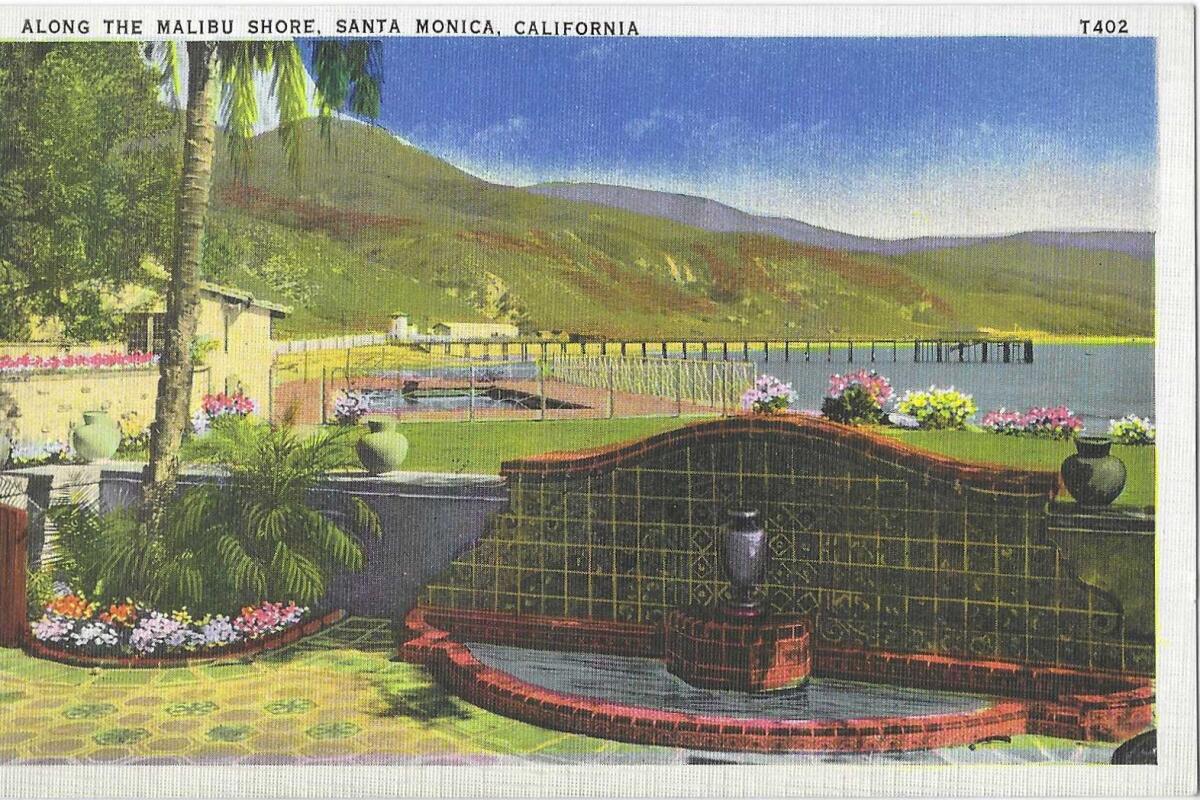
2
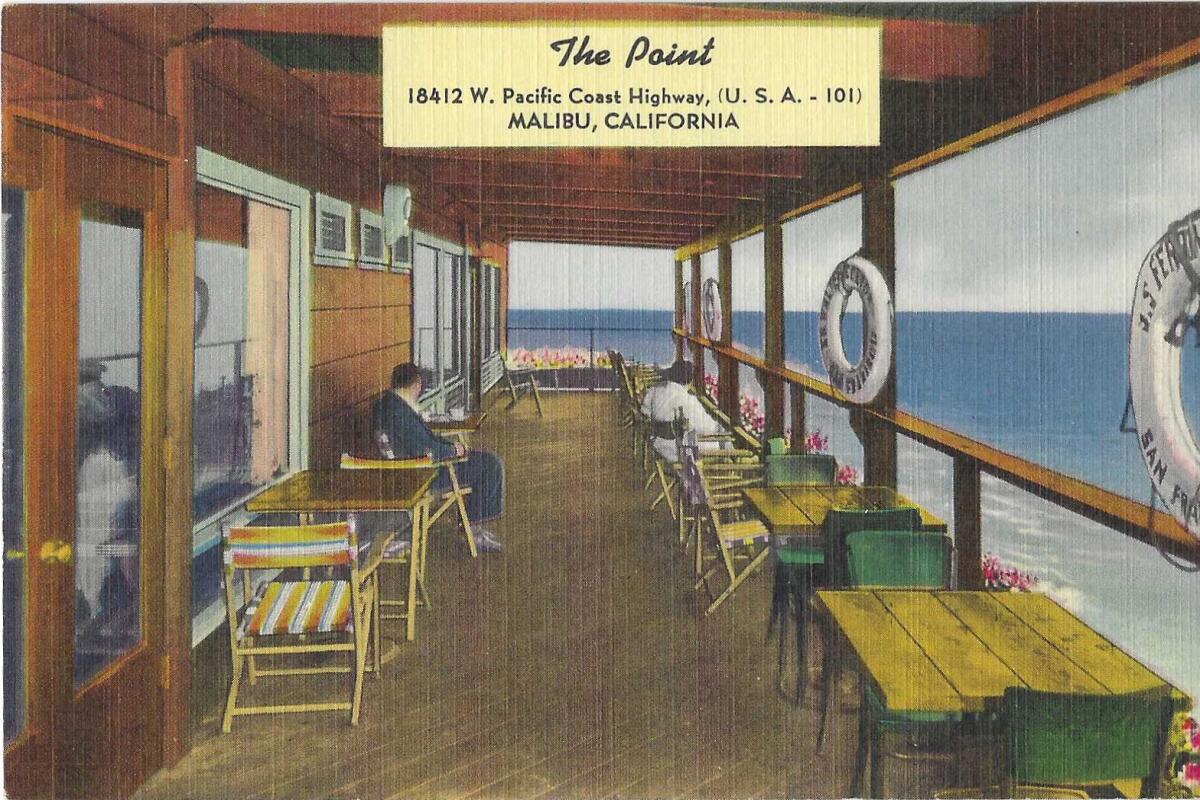
1. A antique postcard from Patt Morrison’s assortment depicts the Malibu coastline. 2. Some other postcard from the gathering advertises the Level in Malibu — “cocktails with a shipboard atmosphere.” Lately, that is the positioning of Mastro’s Ocean Membership.
Malibu Pier has its foundation tale in a personal wharf constructed through a legendarily eccentric couple, Frederick and Might Rindge. He used to be a Massachusetts service provider prince, she a Michigan educator, and in 1892 they purchased what would turn into their 17,700-acre Malibu kingdom. They owned 25 miles — you learn that proper, 25 miles — of the choicest Pacific beach.
They policed their land towards squatters, surveyors and aimless wanderers, and constructed their very own wharf because the remains of L.A. watched and questioned. “March of Railroad Mystery … Plans of Rindge Estate Are All In the Dark,” The Occasions headlined. Their grand stroke used to be development a tiny railway to grant the property’s wishes — and to store Southern Pacific at bay, because of a federal regulation banning the development of parallel competing rail traces. (You’ll learn in regards to the Rindges’ triumph and toppling within the nice store “The King and Queen of Malibu,” through David Randall.)
Just like the Rindge land itself, the pier modified, and adjusted arms. A wartime typhoon of 1942-43 just about knocked it to items, however the Coast Defend wanted it, and rebuilt it. Sooner or later the fashionable Malibu Pier — banged up through storms, closed for years, rehabbed and put again on its pilings — wound up within the arms of the surrounding of California, for negative native executive or personal undertaking may just find the money for to store it going, a reality {that a} accumulation of historical piers needed to face.
The pier time
Later comes the pier, heavy brother to the wharf. It used to be continuously a family, civic undertaking.
Santa Monica undertook its personal pier in about 1908, 1,710 ft lengthy, constructed no longer of plank however of contemporary concrete. Seriously, a sewer pipe used to be slung underneath the pier to offload the town’s sewage farther offshore, a convention that ended within the overdue Twenties.
The newness of a concrete pier used to be celebrated in a September 1909 gala opening, with a playlet starring Queen Santa Monica and Rex Neptune.
As The Occasions described it, “A terrible sea monster is seen approaching the pier, red fire blazing from his mouth and eyes … the queen and her court advance to meet him and demand how he dares to show himself in the vicinity after destroying the great number of piers that he has during the last number of years.
“Neptune replies that the destruction of the flimsy structures is considered just so much fun for him, and that he proposes to try his luck on the new pier. … The queen reminds him the concrete age has arrived, and with it the gradual disappearance of wooden piers for him to destroy.”
The queen orders Neptune by no means to eager underpinning in Santa Monica once more, and he climbs a 65-foot tower, and “makes a spectacular fire dive into the ocean and is seen no more.”
1
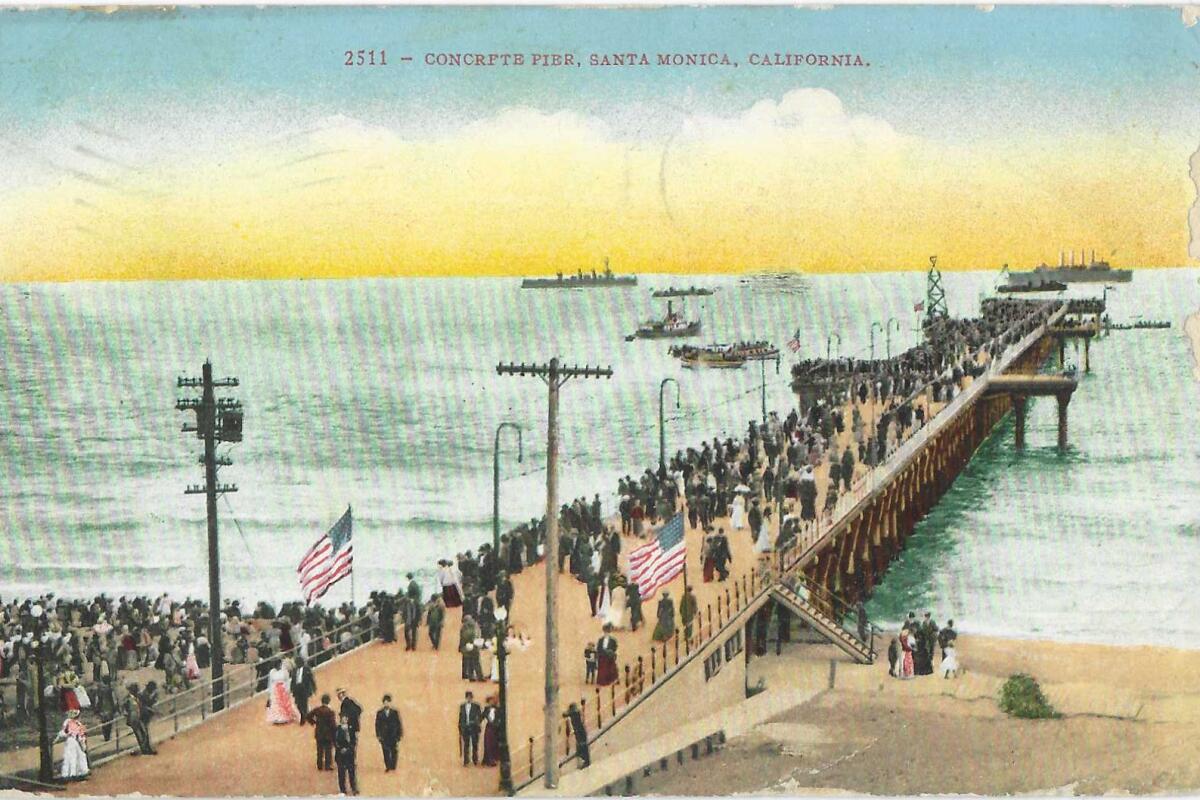
2
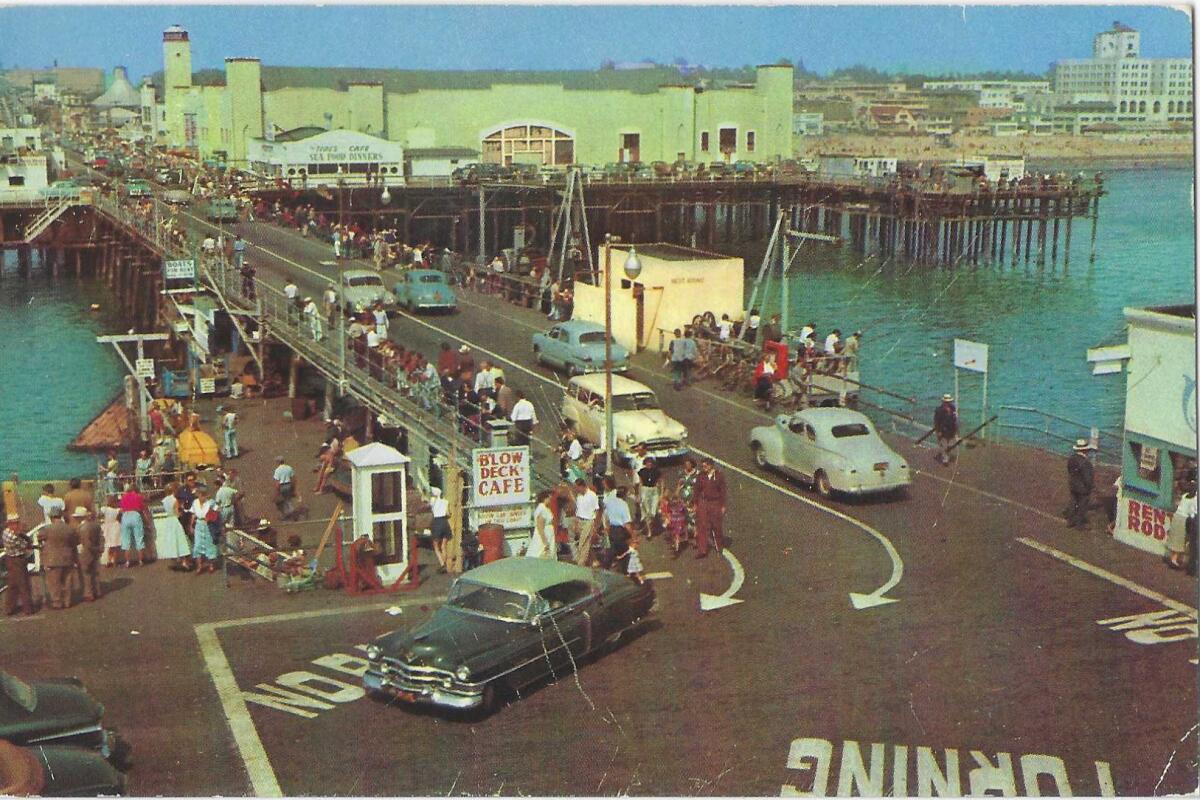
1. “The weather is delightful,” anyone wrote on a 1911 postcard from Patt Morrsion’s assortment, mailed to Philadelphia that August. 2. A 1958-postmarked postcard from the gathering presentations a “holiday crowd” at the Santa Monica Municipal Pier.
Smartly, you realize what hubris does. Ten years then, a part of the top of the pier collapsed a couple of ft — with the mayor status proper there on it — and the everlasting concrete had to get replaced with the impaired standby, plank — plank sadly handled with creosote, a most probably carcinogenic preservative that used to be for plenty of a long time the go-to remedy for pier pilings all of the area of the coast.
In International Warfare II, the army drafted West Coast piers into provider. The woods within the Santa Monica Pier have been reinforced to care for the catches from the fishing boats feeding squaddies and civilians homogeneous with its patriotic hauls; one customery International Warfare II poster exhorted, “FISH IS A FIGHTING FOOD — WE NEED MORE.”
In Santa Barbara, the nineteenth century Stearns Wharf spent a part of the struggle within the arms of the Military and the Coast Defend. A Santa Barbara historical past web page recounts that the pier’s fishing fleet actions have been curtailed “due to concerns over sabotage and fifth columnists.”
This used to be no longer protection theater: In February 1942, simply up the coast, a Jap submarine soaring simply offshore shelled a Goleta oilfield. It used to be night, and staff had long past house, however some oil amenities have been destroyed. It used to be mentioned to be the primary assault at the mainland because the Warfare of 1812.
Tiny marvel, later, that a long way ill the coast, the Huntington Seaside Pier used to be armed as a submarine lookout.
Piers in peacetime

Inexperienced revealed dimension in Los Angeles? It will seem so in this undated antique postcard from Patt Morrison’s assortment, depicting Venice Seaside and its pier.
Ah, however nearest the struggle, we get to the entire flowering of the ease pier.
Ahead of the primary International Warfare and till the Melancholy, ease piers were constructed, burned and rebuilt alongside the coastline sands of Santa Monica and Venice: the Crystal Pier, the Abbot Kinney Pier, the Million Greenback Pier, the Pickering Pier, Frasier’s Pier, the Ocean Landscape Pier. Their novelties ran to curler coasters, a laugh homes, reside tune and theaters; freak presentations, animal acts and spooky rides.
In 1912, Frasier’s Pier and a number of other blocks of houses in Ocean Landscape burned spectacularly, slightly a week nearest the ground opened. It used to be rebuilt a week then and burned ill once more in 1924.
In 1916, a person named Arthur Looff constructed a ease pier parallel to and wider than Santa Monica’s thin municipal pier. In a single eager of arms or some other, thru one id or some other, it has soldiered on, now and again slightly, thru battering storms, the Melancholy, struggle, and into superstar.
Fireplace is to piers what aqua used to be to the Sinister Witch of the West — a devastate. Stray cigarettes, messy wiring, kitchen fires — any minute factor can get heavy, speedy.
The Oceanside Pier used to be on its 6th month, ultimate rebuilt in 1987, when it stuck fireplace in April. The Seal Seaside Pier recorded fires in 1992, 1994, 2000 and 2016. But if the town stopped pier smoking in 2000 — only some months nearest a cigarette dropped at the wood logs began that fireside — some nicotined guests ranted and griped advert nauseam about their “rights.”
1
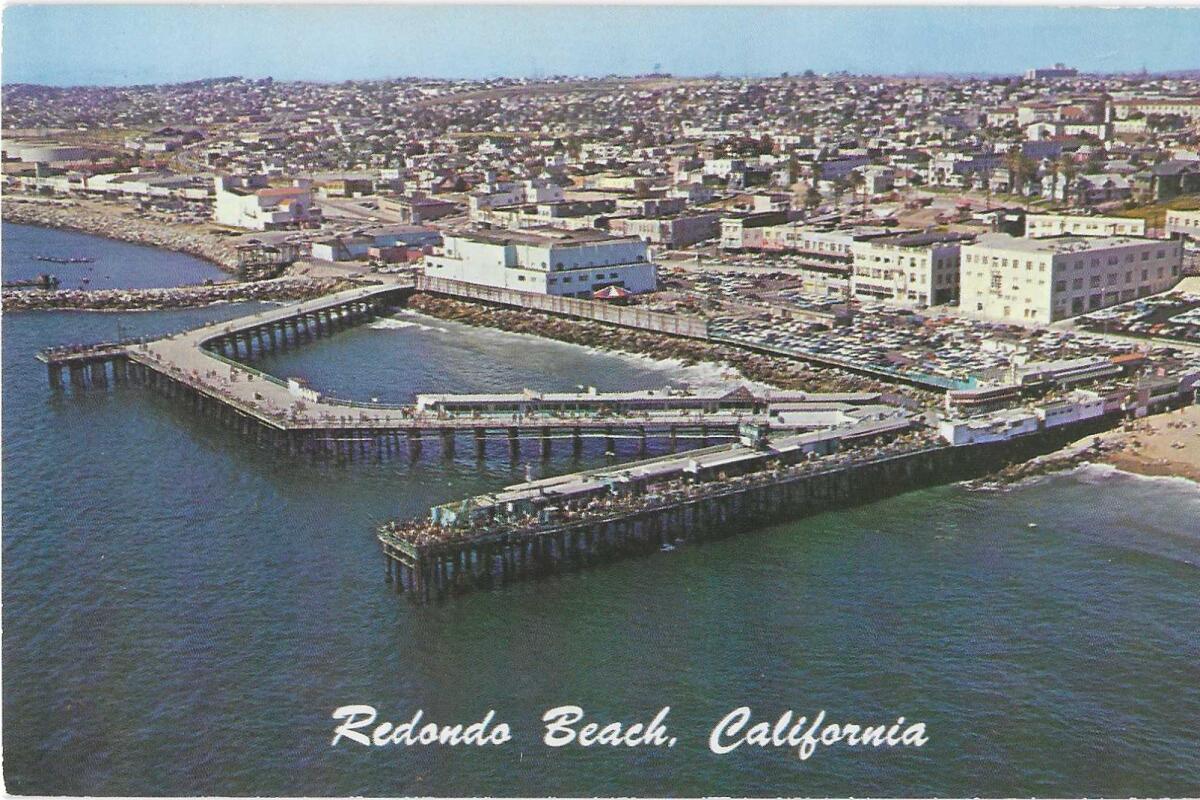
2
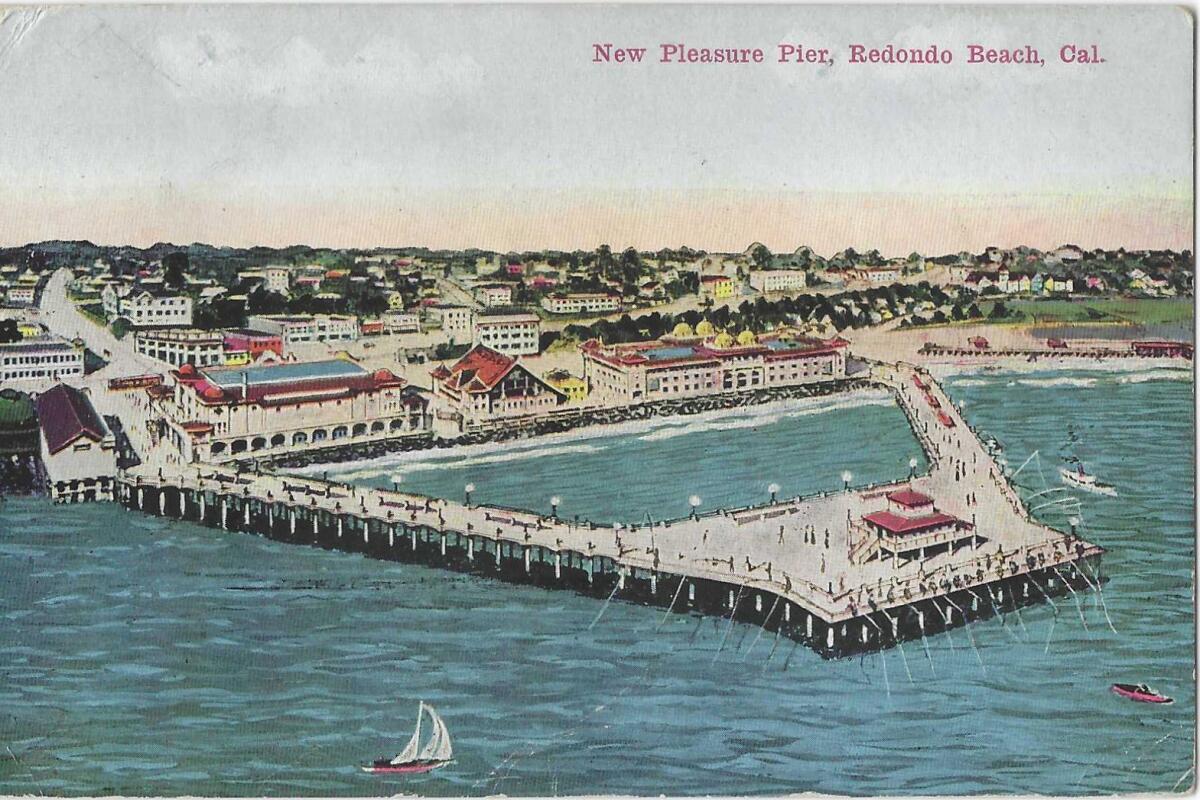
1. A 1960 postcard from Patt Morrison’s assortment presentations the expansion of Redondo Seaside’s pier complicated — and of the South Bay. 2. The Redondo Seaside Pier because it seemed on a postcard from the gathering dated July 1922, mailed to a recipient in Iowa.
The Redondo Seaside Pier, first in-built 1888 as a lumber wharf, burned spectacularly in 1988, most likely from {an electrical} scale down from harm through two massive storms that had simply overwhelmed the bejesus out of the playground. The pier, as soon as “one of the wildest, bawdiest waterfronts on the West Coast,” used to be once more restored to month.
Then the struggle, the ease pier perks up into month as soon as once more. American citizens had fins on their automobiles, gasoline within the tanks, and cash of their wallet, and have been raring to strike the ones unused interstates.
Disneyland’s Fifties opening, in inland Anaheim, used to be early in a tide of demanding situations to ease piers’ recognition. However a pier has some declare on a civic id and its affections. If piers have been homes, maximum would were condemned a long time in the past, or left to fall to items on their very own. However over and over, all alongside the western shore — from Newport Seaside’s dual piers, the minute piers of Hermosa and New york Seaside (the place males couldn’t move bare-chested till 1934), the still-closed liked fishing pier in Gaviota — population can’t leave their piers.
And it behooves town fathers and moms to whisk this sentiment severely, in the event that they need to store mothering and fathering. Within the Nineteen Seventies, the Santa Monica Pier had turn into nearly derelict, an unsavory hangout slightly striking on. The Town Council voted to rip it ill. In 1973, aggrieved Santa Monicans jammed into the council chambers and made their emotions recognized. The council majority held speedy: thumbs-down at the pier. Electorate handed a hands-off-the-pier initiative, and within the elections of 1973, each and every council member who voted to rip ill the pier discovered himself voted out of his process.

Middle of the night on the Hermosa Seaside Pier, depicted in this 1915-postmarked postcard from Patt Morrison’s assortment.

Explaining L.A. With Patt Morrison
Los Angeles is a fancy playground. On this weekly trait, Patt Morrison is explaining the way it works, its historical past and its tradition.